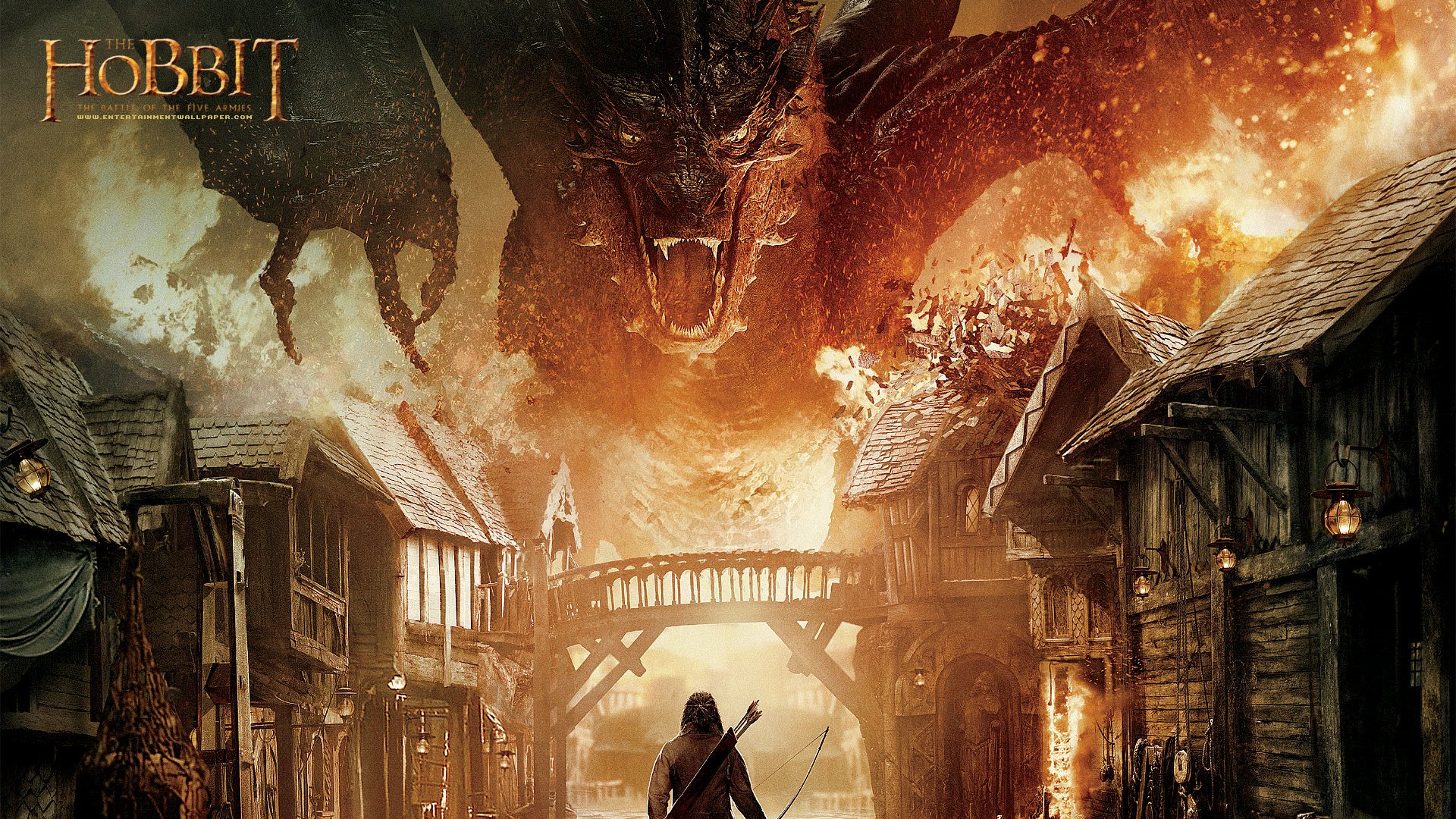THE HOBBIT FILMS

While 'Lord of The Ring's' (published in 1954) is Tolkien's epic, high fantasy, 'The Hobbit' is his more playful and childlike story within the fantasy universe that he has created. This story follows the quest of a simple hobbit named Bilbo Baggins. Bilbo enjoys the ordinary things in life, such as his hobbit-hole in the country side and eating second breakfast.
Yet his life completely changes when he is called by Gandalf to go off an epic adventure with a band of dwarves to reclaim their treasure from the fearsome dragon, Smaug. Gandalf asks Bilbo to go along on the adventure as the party's "burglar." The dwarves are skeptical, but Gandalf assures that there is more to the little hobbit than meets the eye. So Bilbo leaves his simple life behind to run from goblins, journey through mountains, fly with eagles, speak with a dragon and find magical treasure.
Tolkien himself was heavily inspired by Norse Myth. This is obvious in his novel's inclusion of dwarves, elves and magical runes. While fantasy literature existed before Tolkien, it was his works of high fantasy that help define the genre and bring it into the mainstream. These days the elements introduced by Tolkien are a key staple of the fantasy genre itself. Yet in addition to being inspired by ancient myth, some say that the events of Tolkien's novels were inspired by his own life. He grew up in the English countryside, and had a great deal of contempt for the side effects of industrialization that took place there. For much of his life he refused to ride in cars and traveled by bicycle instead. It is difficult to speculate on what Tolkien did and did not believe. While his works were inspired by Norse Paganism, he defined himself as a devout Christian.
Yet the theme of his works is very representative of key problems in the modern world, whether this was Tolkien's intention or not. The destructive power of greed for instance, is a key motif in both 'The Hobbit' and 'Lord of the Rings.' The magical ring that Bilbo finds has the power to corrupt all who wear it. The miserable creature Gollum is a result of the ring's destructive power.
So there are obvious parallels here between the corruption of the ring, and the greed of an Industrial world order that is destroying nature, along with destroying a simpler way of life. Even the dark and smoky scenery of Mordor in 'Lord of The Rings' looks like a picture of life at a steel mill.
Did the movie adaptation of 'The Hobbit' book adequately cover these themes? The reviews are mixed. Even though there is only one Hobbit book, Peter Jackson has split this 300 page book into three movies. Some reviewers have complained that the movies seemed stretched out (since they were based on just one book) and that there was a heavy reliance on CGI (more so than Lord of The Rings). But we leave it up to you to decide how you feel about the movies. At the very least, there is awe inspiring scenery to enjoy (given that the movies were filmed in New Zealand) and several action packed fighting scenes. While 'The Hobbit' may not carry the same level of emotional punch that 'Lord of The Rings' conveyed, it still has its engaging moments. The movie ends in The Shire where the wise words of Bilbo Baggins accentuate the need for small folk to do momentous tasks, even in the face of overwhelming evil and perilous danger.
Check out the trailers below to see if you're interested.
FILM TRAILERS
THE HOBBIT: AN UNEXPECTED JOURNEY
THE HOBBIT: THE DESOLATION OF SMAUG
THE HOBBIT: THE BATTLE OF THE FIVE ARMIES